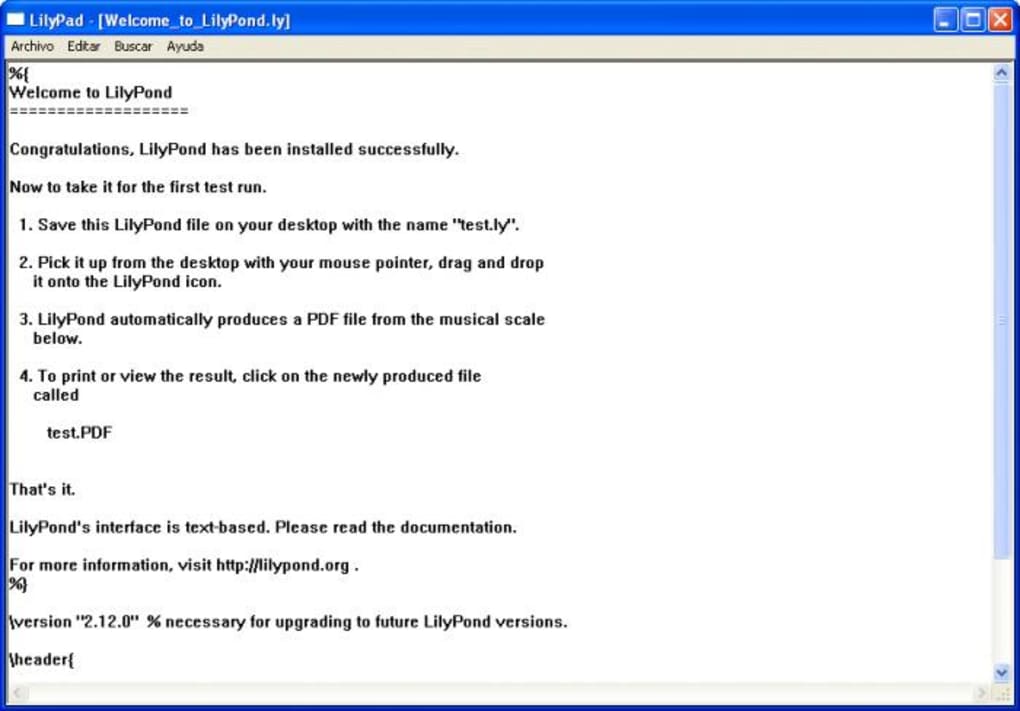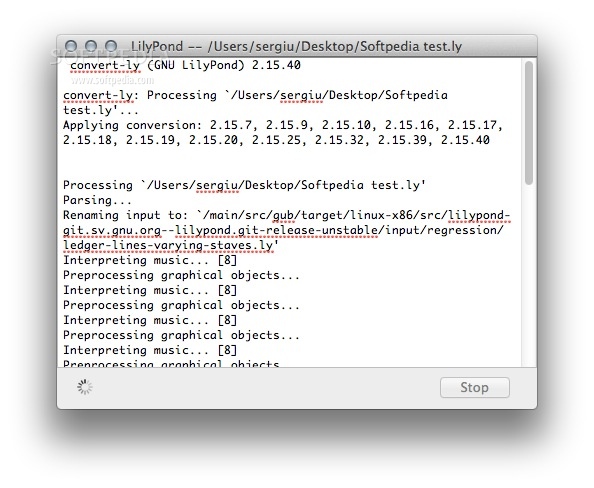
Aural Skills and Musical Sensibility 13.3.2. When You Run Solfege for the First Time 13.2.2.
REMINDER ACCIDENTAL LILYPOND SOFTWARE
Hardware and Software Requirements 13.1.2.

Work on an Orchestral Score (Tutorial) 12.6.1. Work on a Counterpoint Exercise (Tutorial) 12.5.1. Requirements and Installation (for Frescobaldi) 12.3. Recording SuperCollider's Output (Tutorial) 12. Making a Useful Section out of the Second Part 11.4.9. Ordering and Other Synth Features 11.3.13. Basic Programming in SuperCollider 11.3.1. Other Tips for Using GEdit with SuperCollider 11.3. Enable SuperCollider Mode and Start a Server 11.2.3. Enable and Configure SCEd in GEdit 11.2.2. In 2. Afaics it handles tie breaks the same way as before. Still needs lots of clean up - as I do not entirely understand the idea of the tie-break handling. Please comment on the new structure of the engraver. Using GEdit to Write and Run SuperCollider Programs 11.2.1. On 4:30 pm, Mark Stephen Mrotek wrote: Under 2.18 a reminder accidental could be created with an '' (exclamation point). Ive restructured the accidentals engraver, and added property autoReminders, automatically creating reminder accidentals. Multiple FluidSynth Instances with Qsynth 11. Change the Number of MIDI Input Channels 10.5.2. Assign Programs to Channels with Qsynth 10.5.1. i.e., with once override Staff. I dont really understand why youre turning off accidental engraver at all, but you can probably achieve what you want by removing the stencil in the music. Use FluidSynth in a Terminal Emulator 10.4. Im guessing youre turning off accidental engraver at either staff or global level. MIDI Instruments, Banks, Programs, and Patches 10.1.3. Write a Song in Rosegarden (Tutorial) 9.4.1. Setup JACK and FluidSynth ( Qsynth) 9.2.2. Create a MIDI Composition (Tutorial) 8.4.1. Export a Whole File (Audio and MIDI Together) 8.3.4. Use the MIDI Matrix Editor's Tools 8.3.3. Use Qtractor with JACK ( QjackCtl) 8.2.2. I revised TwinNote’s alternative key signatures, and documented them on a new Key Signatures page. Here is a progress report from early 2013. It has been a productive couple of months on various fronts, especially with ongoing work on LilyPond and TwinNote (adventures in coding in Scheme). Make Further Adjustments with an Automation Track 7.5.5. LilyPond, Key Signatures, Accidental Signs, Etc. Setting the Session for Stereo Output and Disabling Edit Groups 7.5.2. Arrange Regions into the Right Places 7.4.7. Compare Multiple Recordings of the Same Thing 7.4.6. Routing Audio and Managing JACK Connections 7.2.10. Adjusting Recording Level (Volume) 7.2.7. Connecting Audio Sources to Ardour 7.2.5. Add a Special Effect (the Phaser) 5.6.11. Repeat an Already-Recorded Segment 5.6.10. Create a New Login Sound (Tutorial) 5.6.1. Set the Project's Sample Rate and Format 5.4. Configure Audacity for Your Sound Card 5.3.3.
REMINDER ACCIDENTAL LILYPOND INSTALL
Install the "Planet CCRMA at Home" Software Repository 4.3.2. Use Software from Planet CCRMA at Home 4.3.1. A Possible "Best Practices" Solution 4.3. Deciding Whether to Use Planet CCRMA at Home 4.2.1. Getting a Real-Time Kernel in Fedora Linux 4. Busses, Master Bus, and Sub-Master Bus 1.4.3. Sample, Sample Rate, Sample Format, and Bit Rate 1.3.1. Mark -Original Message- From: lilypond-user mailto:addresshidden On Behalf Of Noeck Sent: Sunday, Novem4:41 PM To: addresshidden Subject: Re: reminder accidental Hi Mark, do you have a minimal example.

Press the asterisk key again to restore it.Preface 1. (If there was an accidental on the note, it’s now hidden. If there was no accidental on the note, a courtesy sharp, flat, or natural now appears. You can also position the insertion bar and crossbar on the notehead using the arrow keys. Click the notehead for which you want the accidental displayed.Choose the Speedy Entry tool, and click the measure in question.For example, in a measure containing several E accidentals, the first E in the next measure often has a courtesy natural attached, even though the E is technically canceled in the new measure. But there are times when the composer wants to remind the player that an accidental is (or is not) in effect for a particular note. A courtesy accidental, also called a cautionary or reminder accidental, is one that, according to the rules of accidental occurrence, isn’t strictly necessary before a note.


 0 kommentar(er)
0 kommentar(er)
